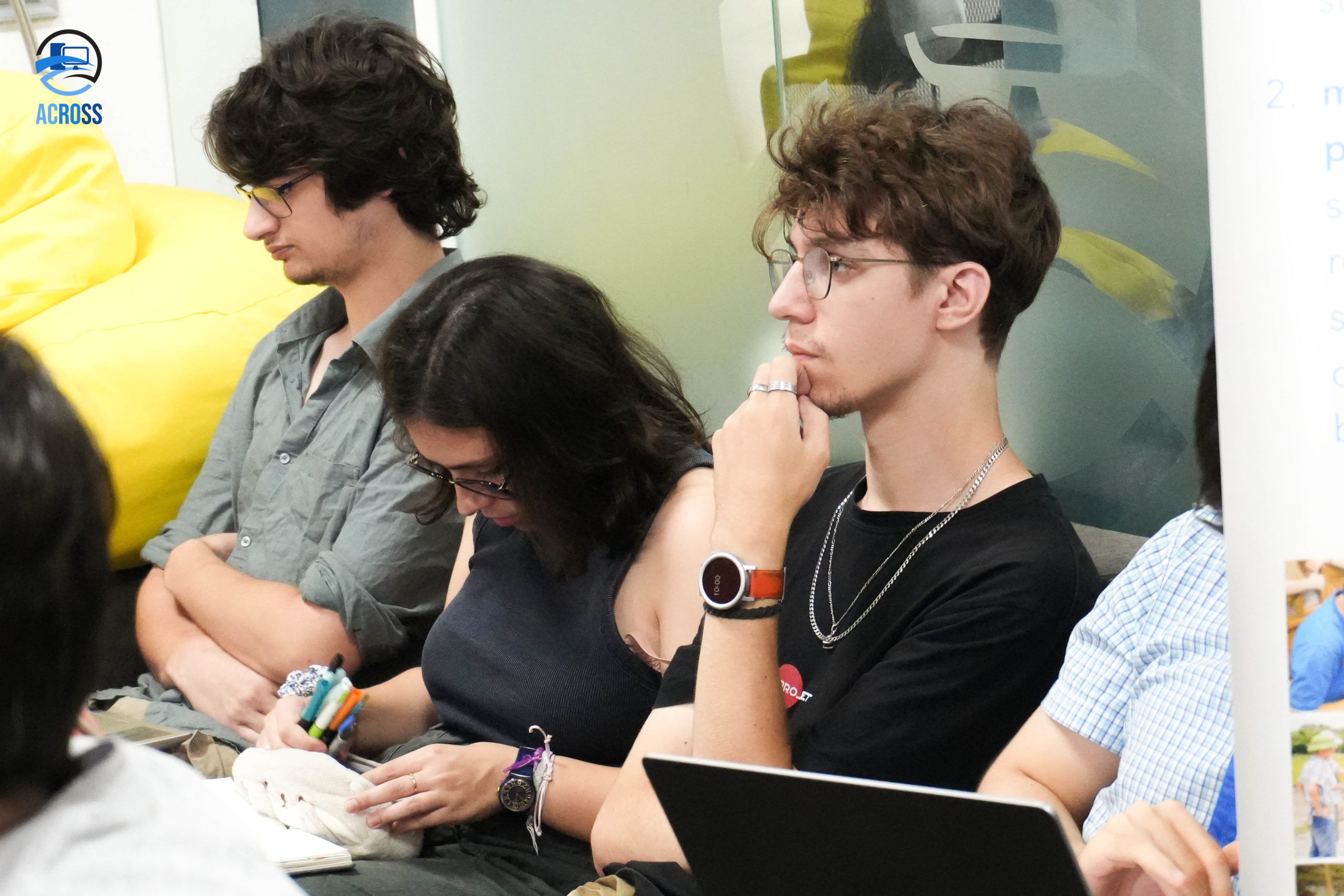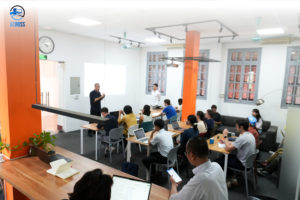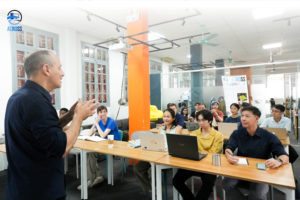
This July, the ACROSS laboratory saw a vibrant exchange of ideas and innovation as interns and PhD students shared the progress of their ongoing projects. The presentations ranged from modeling applications for sustainable agriculture and virtual flood simulations, to cutting-edge research in artificial intelligence, education, and territorial resilience.

Each presentation underscored the interdisciplinary nature of the ACROSS laboratory, where geoscience, computer modeling, artificial intelligence, and education converge to tackle sustainability challenges in Vietnam.
This culture of monthly seminars reflects ACROSS’s core mission: to promote a progressive, problem-oriented approach that brings together scientists, students, and practitioners. Their collective contributions span a range of research activities, capturing the diversity of Vietnam’s agricultural landscapes, socio-environmental contexts, and water-related issues.

Modeling the Future of Agriculture in the Mekong Delta
Hoang Ha Dang presented his work on the STAR-FARM project, where he used the ORYZA rice growth model to simulate and compare two irrigation practices. By integrating the results into the GAMA platform, the team was able to visualize water dynamics and support decision-making for sustainable rice cultivation through three scenario simulations.
Automated Perception-Based Regional Mapping
As part of the PERFORSSA project, Dieudonné BYAOMBE focuses on automating the spatial merging of maps generated through the “Zonage à Dires d’Acteurs” (ZADA), a participatory method for mapping local risk perceptions. A Python-based algorithm is being developed to integrate natural language processing techniques—specifically semantic alignment—with GIS geoprocessing, aiming to produce an aggregated map of territorial perceptions. The objective is to deliver a semi-automated tool equipped with an interactive interface to support the cross-analysis of spatialized data collected from field surveys.
Exploring resilience territory through its infrastructures and community in a tourist area in Vietnam
Luong Thi Duyen shared findings from her study on territorial resilience in Le Thuy District, Vietnam. Through two field trips—one during the dry season and another after Tropical Storm Trami—she examined how local communities and infrastructure cope with extreme weather events. Her work reveals strong community adaptability, yet highlights infrastructure as a vulnerability in the face of future floods.

Lu Lut (flooding) VR Model in Quang Binh province
Nguyen Thanh Do continued his development for the “Lu Lut” (Flooding) VR model within the SIMPLE project. Designed as an educational tool, the simulation allows users to experience real-life flooding scenarios in Quang Binh province and test flood mitigation strategies. The model features a 90% performance optimization and the ability to switch between geographic locations, such as Hanoi or Quang Binh, using real GIS data.
Developing a Generic Approach for Generating “Human” Agents Based on LLMs for Agent-Based Modeling
Ilian Benaïssa-Lejay explored the integration of Large Language Models (LLMs) into agent-based simulations. His projects spanned multiple areas—from modeling technology adoption among Vietnamese farmers to generating realistic urban mobility patterns in Hanoi. He also experimented with hybrid approaches combining Bayesian networks and instruction-tuned LLMs for synthetic population generation.
AI for GAMA Code Generation
Nicolas Renout is developing an AI system that assists in GAMA model creation. Without sufficient training data for fine-tuning, he implemented a graph-based Retrieval Augmented Generation (RAG) method, connecting key documentation concepts and using constrained generation to ensure grammar compliance in AI outputs. This foundational work opens up new potential for AI-assisted agent-based modeling.
Multi-Agent Modeling and Reinforcement Learning
Felix Savarit introduced the first release of the gama-gymnasium package, accompanied by documentation and a GAMA plugin. His presentation detailed the architecture and operational workflow of the package, including the reload–step–close process. Upcoming developments include the release of a gama-pettingzoo package and efforts to enable visualization of GAMA displays in headless mode.
Co-construction of educational scenarios within the framework of the EVEIL project
Romance de Mékong, as part of the EVEIL project, presented her co-construction of VR-based educational models on biodiversity and RAC (waste) (developed within the SIMPLE project). Collaborating closely with French-speaking teachers, she organized a workshop in Hanoi (July 15–16) to test and refine pedagogical sequences along with the VR demonstrations.
In addition to Romance de Mékong , Clémence Pérard also shared updates on the EVEIL project’s communication materials, from illustrations to narrative design. Her contributions ensure that the scientific and educational content produced by the lab is accessible, engaging, and aligned with the project’s core messages.
Creative Data Visualizations in GAMA
Noé Lojkine demonstrated GAMABLEND, a tool designed to visualize GAMA simulation data directly in Blender. From dynamic water movement to flood zones and population changes, the tool offers new possibilities for visually compelling and informative research outputs. Additionally, Noé Lojkine also presented assets and concept art for the “Lu Lut” game and the EVEIL project.
Illustrated communication
Clémence Pérard worked on some illustrations to facilitate the use of the different games, with for example an illustrated kakemono. The objective is to play independently, without someone explaining next to the player. She’s also working on a video to explain how to use the VR materials. Additionally, she created illustrated exercises for the EVEIL project and different illustrations for the communication of the laboratory.





